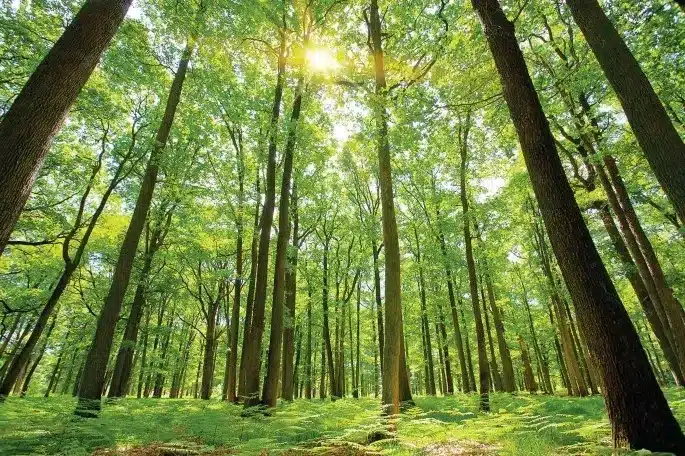About Global Forest Watch (GFW)
- It is an open-source web application to monitor global forests in near real-time using satellite data and other sources.
- It is a project of the Washington-based nonprofit research organization, the World Resources Institute (WRI). Most of the data is compiled by the University of Maryland researchers.
- It is free and simple to use, enabling anyone to create custom maps, analyze foresttrends, subscribe to alerts, or download data fortheir local area or the entire world.
- It refers to tree cover when talking about forest extent, loss, and gain. Tree cover is a convenient metric for monitoring forest change because it is easily measurable from spaceusing freely available, medium-resolution satellite imagery.
- Highlights of the GFW’s annual forest loss data:
- The loss of primary forests–those untouched by people and sometimes known as old-growth forests – in the tropicsdeclined 9% last year compared to 2022.
- The world last year lost about 37,000 square kilometers (14,000 square miles) of tropical primary forest, an area nearly as big as Switzerland.
- Brazil, the Democratic Republic of Congo, and Bolivia topped the ranking of tropical countries with the most primary forest losses.
- Deforestation globally rose by 3.2% in 2023.
- India has lost 2.33 million hectaresof tree cover since 2000, equivalent to a six percent decrease in tree cover during this period.
- The country lost 4,14,000 hectaresof humid primary forest (4.1 percent) from 2002 to 2023, making up 18 per cent of its total tree cover loss in the same period.
- Between 2001 and 2022, forests in India emitted 51 million tons of carbon dioxide equivalent a year and removed 141 million tons of carbon dioxide equivalent a year. This represents a net carbon sink of 89.9 million tons of carbon dioxide equivalent a year.
- An average of 51.0 million tons of carbon dioxideequivalent per year was released into the atmosphere as a result of tree cover loss in India.
- The data showed that 95 percent of the tree cover loss in India from 2013 to 2023 occurred within natural forests.
- The GFW data showed that five states accounted for 60 percent of all tree cover losses between 2001 and 2023.
- Assam had the maximum tree cover loss at 324,000 hectares, compared to an average of 66,600 hectares. Mizoram lost 312,000 hectares of tree cover, Arunachal Pradesh 262,000 hectares, Nagaland 259,000 hectares, and Manipur 240,000 hectares.
Q1: What is the World Resources Institute (WRI)?
It is a research institute established in 1982 to promote environmentally sound and socially equitable development. It is headquartered in Washington, D.C.They organize their work around seven global challenges: Food, Forests, Water, Energy, Climate, the Ocean and Cities.
Source: India Lost 2.33 Million Hectares Of Tree Cover Since 2000: Global Forest Watch
Last updated on June, 2025
→ UPSC Notification 2025 was released on 22nd January 2025.
→ UPSC Prelims Result 2025 is out now for the CSE held on 25 May 2025.
→ UPSC Prelims Question Paper 2025 and Unofficial Prelims Answer Key 2025 are available now.
→ UPSC Calendar 2026 is released on 15th May, 2025.
→ The UPSC Vacancy 2025 were released 1129, out of which 979 were for UPSC CSE and remaining 150 are for UPSC IFoS.
→ UPSC Mains 2025 will be conducted on 22nd August 2025.
→ UPSC Prelims 2026 will be conducted on 24th May, 2026 & UPSC Mains 2026 will be conducted on 21st August 2026.
→ The UPSC Selection Process is of 3 stages-Prelims, Mains and Interview.
→ UPSC Result 2024 is released with latest UPSC Marksheet 2024. Check Now!
→ UPSC Toppers List 2024 is released now. Shakti Dubey is UPSC AIR 1 2024 Topper.
→ Also check Best IAS Coaching in Delhi
























